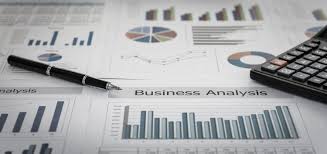We are initiating coverage of Kordsa Teknik Tekstil (“Kordsa”) with a Buy rating and a 12M TP of TL42.9/s, implying 32% upside potential. Kordsa has benefitted from rising tire cord fabric (TCF) demand post 3Q20 and its sales volume was up 40% y/y vs. 10% y/y global volume growth in 9M21. Both company and market research projections put TCF demand in NY66 and polyester above the 5Y average 2% growth rate, predicting 5.4% CAGR over 2021-2024. The recovery in composite demand is expected to pick up post 3Q22. Trading at a 2022E P/E of 6.4x and an EV/EBITDA of 5.6x (23% and 14% discounts, respectively, vs. global peers), the multiples appear attractive. Below are the key highlights of Kordsa’s investment case.
NY66 and PET tire cord demand to continue in the medium term: Kordsa has benefitted from the recovery in tire cord demand that began in 3Q20. Inkwood Research’s projections for tire reinforcement products show a 5.4% CAGR between 2020-2028, mainly due to automotive growth in Asia-Pacific. Kordsa’s estimates are in line with that, with NY66 and PET demand showing a 5.6% CAGR over 2021-2024, much higher than the 5Y average growth rate of 2%.
Geographically diversified asset base provides local advantage vs. competitors: Kordsa’s global footprint extends to four continents, with US, Turkey, Brazil, Thailand and Indonesian operations in TCF, composite and R&D. This diversified asset base has enabled Kordsa to capture market share in local markets where continuing logistical problems have shifted demand away from foreign markets. Dwindling Chinese exports of TCF due to the domestic supply-demand dynamics also played a role in the shift. Thus, Kordsa recorded 40% y/y growth vs. 10% y/y global volume growth in 9M21, with the growth predominantly coming from the APAC region. With supply bottlenecks expected to continue in 2022, its local reach continues to be an advantage in terms of volume capture vs. its peers.
A lagging but promising recovery in composites: The composite business of Kordsa has high exposure to aerospace demand via its North American subsidiaries, which specialize in civil aerospace products. International travel restrictions and the subsequent downturn in aircraft demand slashed revenues by 27% y/y in 2020. We expect the composite segment to record better growth starting from 3Q22, at 12% USD-based growth with upside risks post the pandemic period. Meanwhile, increased business in automotive, medical and sport applications should support segmental revenues in 2021-2022.
Inorganic growth may get back on track: Kordsa made a fast entry into the advanced composite sector, with four acquisitions in 2018-2019. The acquired businesses were US-based aviation/aerospace and defense-oriented composite producers that were poised to benefit from the global growth of the industry. The subsequent debt load and the pandemic put a stop to the inorganic growth program. However, we expect the growth program to restart, with opportunistic small- to medium-scale bolt-on acquisitions. Automotive composites in the Europe region are prime targets to expand the product range and diversify the company’s aviation sector exposure, with a possible investment size of USD100m. The addition of composite producers to its portfolio would be a positive development, in our view, given this is a growing, higher-margin segment vs. the core TCF business.
Defensive vs. depreciation in local currencies: The revenue base of Kordsa is entirely in hard currencies, while local currencies compose c.20% of costs. Therefore, the company benefits from depreciating local currencies.
Consistent dividend payer: In the last 10 years Kordsa has held back dividends only twice (2014 and 2021), with a 10Y average of a 4% dividend yield, and a 58% payout ratio. We expect a dividend payout ratio of 65% going forward.
Attractive multiples: Trading at a 2022E P/E of 6.4x and an EV/EBITDA of 5.6, Kordsa currently trades at a discount of c.23% vs. the median P/E and 14% vs. the median EV/EBITDA multiples of peer companies.
Initiate at Buy with a target price of TL42.9: We have used a blended valuation model, using discounted cash flow and comparable company multiples, to arrive at a target price of TL42.9, implying 32% upside.
Risks: The main risks are: 1) an unexpected decrease in TCF demand and price levels; and 2) a later-than-expected recovery of aerospace and civil aviation composite demand.
